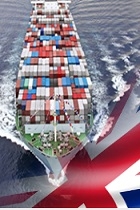The Human Element in Shipping: Risk-Taking

In part 2 from “The Human Elment”, we look at “Risk Taking” and “Making Decisions”. The guide helps to identify countermeasures to avoid human errors and bad decisions, and how to manage the human element on all levels – from engine room, to bridge, to shore.
In the last part, we learned that people have to make sense of things (information) in order to make decisions or plans. This sense making is heavily influenced by a number of factors, such as culture, past experience, ability to communicate, empathy and one’s character.
Even when we make a decision, we can never be certain that we have made the right one and that we have interpreted all relevant data correctly for a positive outcome.
This is partly because we want our plan to work, or we want our decision to be right. We can therefore process information selectively, hence, making assumptions and interpretations that fit with our personal point of view.
This all involves risks and we need to accept risks but, sometimes, even when we know that we do not have sufficient information or we're resting on a false sense of security, we persist in our conclusion/ plan/ decision.
What affects risk taking in the shipping industry and in humans?
Risks, are determined by our feeling about a given situation, which of course can be easily wrong.
The feeling might be influenced by an incorrect perception of control. This imagination of having control might be influenced by thinking positively about our skills, experience, technical equipment, hard training and a familiarity with the situation.
People forget that missing knowledge and over-estimation can then lead to bad decisions.
“The Human Element – A Guide to Human Behavior in Shipping Industry” gives an example of a deckhand who was washed overboard – he only secured himself in heavy weather by wrapping an arm around the pulpit rail instead of using the harness. Therefore he took a risk and, based on his perception, his decision was good enough, but it was proven otherwise.
This situation involved perceived familiarity. It was not the first time the deckhand had secured himself in this way, therefore the situation seemed to be familiar and hence controllable.
Another point of influence is perceived value – when something supports a higher goal and could bring us a step closer to achieving it, the more we desire it, the less risky it appears to be.

How decisions are made in shipping
To make a decision based on the information we have, we need to work through all the options, assessing alternatives and interpreting all the facts. Therefore, decision-making is a very time-consuming task and we need to decide how efficient or thorough to be, as time is a rare commodity in shipping.
This presents a problem because it means there is likely to be a trade-off between safety (by thorough investigation) and profitability (by deciding quickly).
In reality we need both, but often a company's culture dictates which of these qualities takes preference.
Pressure from the company’s demand for efficiency leads to a shift in perception where thoroughness is valued less and seaman feel the need to work as efficiently and as quickly as they can.
It is difficult to consciously act against this urge and people need adequate training in order to process under pressure in order to make better decisions.
Dirk Gregory and Paul Shanahan of the UK Maritime and Coastguard Agency developed the guide The Human Element – A Guide to Human Behavior in the Shipping Industry.

Post your comment
You cannot post comments until you have logged in.
Login to post a commentComments
No one has commented on this page yet.
RSS feed for comments on this page | RSS feed for all comments